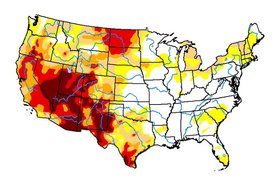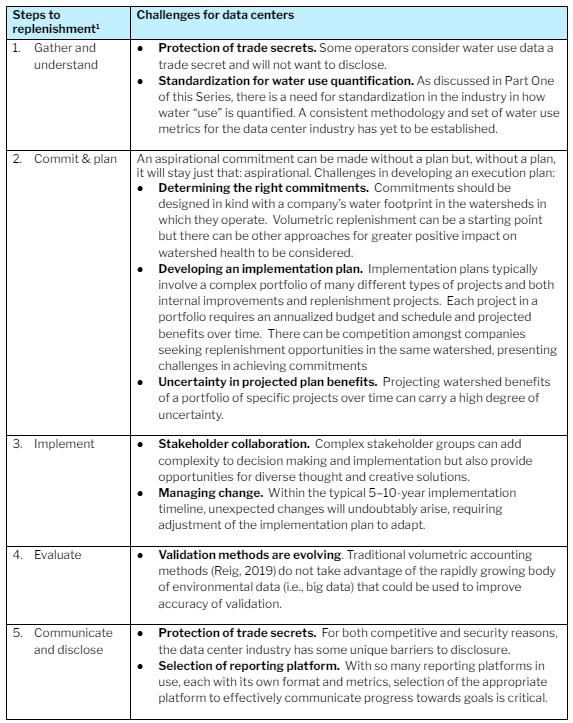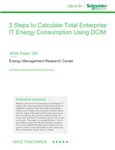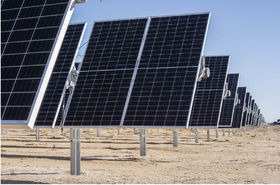As explosive growth of the data center industry continues, and the definition of “sustainable” operations evolves, water management approaches must adapt for long-term reliable operation and stewardship of finite water resources
As explosive growth of the data center industry continues, and the definition of “sustainable” operations evolves, water management approaches must adapt for long-term reliable operation and stewardship of finite water resources
In Part 1 and Part 2 of this series, we reviewed water management practices and key metrics and performance indicators and the management of water risks to data center operations. In this third and final segment, we examine the challenges and opportunities as more data center operators consider commitments to water replenishment.
Changing focus: a watershed view
Alongside other sectors, the data center industry is also starting to embrace replenishment and watershed health as part of their Environmental, Social, and Corporate Governance (ESG) goals, as evidenced by recent water stewardship commitments announced by industry leaders Microsoft (Smith, 2020), Google (Brandt, 2021) and Facebook.
Market drivers are now in place for data center water management to expand to include contributions at the watershed level, including the offset of consumptive water use. The primary market drivers behind this momentum are
- the growing and widespread recognition that maintaining sustainable water resources requires collaborative and creative solutions and
- expectations on companies from their employees, customers, investors, and shareholders to define strong ESG commitments and to follow through with action and increased transparency and consistency in reporting (e.g., annual sustainability reports, Carbon Disclosure Project reporting, Alliance for Global Water Stewardship Certification, and more).
Replenishment: from aspiration to reality
Once a commitment to water replenishment has been made, the challenge comes in developing a plan with a high probability of success in meeting the goal. Such a plan must consider a portfolio of potential projects, each with their own estimated volumetric water benefit over time, and their own economic profile including initial capital expenditures and operation and maintenance costs over time. Determining when to invest in which project and how to prioritize projects for implementation requires a complex set of decision analysis tools and an iterative approach for continual refinement as projected benefits are validated post-implementation.
The Alliance for Global Water Stewardship (AWS) has published a standard framework (Wade, 2021) that is widely used and can be applied to any industry. The framework is built around five steps:
- Gather and understand data on shared water challenges.
- Commit & plan development of a water stewardship plan.
- Implement the site’s water stewardship plan.
- Evaluate performance against the plan.
- Communicate and disclose the site’s water stewardship efforts.
This framework was developed for the site level to facilitate certification of completion from AWS. The same basic approach can be aggregated to a portfolio level when evaluating a data center operator’s global network of facilities. While the steps within the framework may appear straightforward, significant challenges exist in their implementation as outlined in the table below:
While challenges exist, so do solutions. Creative approaches and cross sector, multi-disciplinary partnerships will be needed to develop, implement, and validate projects and strong stakeholder collaboration will be essential for success. A couple of examples of such creative collaboration include:
- Apple and Facebook’s partnership in the City of Prineville, Oregon, to develop and implement an innovative groundwater storage project, significantly expanding the city’s potable water supplies and reduce pressure on the local watershed (Apple, 2021; Facebook, 2021).
- Microsoft’s collaboration with the City of Quincy, Washington, to build an advanced water treatment system to treat industrial wastewater for reuse as cooling water, reducing water stress in the area and avoiding the need to develop additional potable water supplies (Microsoft, 2021).
As more and more companies endeavor to develop replenishment projects, the market is sure to respond with emerging services to address these challenges and facilitate successful follow-through on water replenishment commitments.
Conclusions
The data center industry is undergoing a significant shift in water management practices, from a focus on minimizing and mitigating water risk to core operations, to embracing the business case for watershed replenishment and committing to action. Just as the leading data center companies have transformed our digital lives through their products and services, they are sure to bring their own unique approaches to the complex and inter-related water challenges we face today.
Rebecca Maco is a project manager and process engineer with over 20 years of experience.
Thomas Steinwinder currently leads Brown and Caldwell’s data center & mission critical water business.
Dr. De Las Casas is Brown and Caldwell’s data center water leader.
References
- Apple, 2021. Environmental Progress Report, 2021.
- Brandt, Kate. Our commitment to water stewardship. Official Google blog. September 9, 2021
- Facebook, 2021. 2020 Sustainability Report.
- International Organization for Standardization (ISO). Information technology - Data centres key performance indicators - Part 9: Water Usage Effectiveness (WUE). “Under Development” as of June 2021.
- Microsoft, 2021. 2020 Environmental Sustainability Report.
- Mytton, David. Data centre water consumption. Nature Partner Journals | Clean Water. 4:11. February 15, 2021.
- Patterson, M. Water usage effectiveness (WUE): a greed grid data center sustainability metric. Tech Rep. WP35, The Green Grid. 2011.
- Reig, Paul et al. Volumetric Water Benefit Accounting (VWBA): A Method for Implementing and Valuing Water Stewardship Activities. Working Paper. World Resources Institute. August 2019.
- Rozza, Joe P. et al, Corporate Water Stewardship: Achieving a Sustainable Balance. Journal of Management and Sustainability. 3 (4). Page 41-52 . 2013
- Shehabi, Arman et al. United States Data Center Energy Usage Report. Ernest Orlando Lawrence Berkeley National Laboratory. June 2016
- Smith, Brad. “Microsoft will replenish more water than it consumes by 2030”. Official Microsoft Blog. September 21, 2020
- Wade, Sara and Rylan Dobson. Water Risk in the ICT Sector: The Case for Action. Alliance for Global Water Stewardship. 2021
Read the series:






